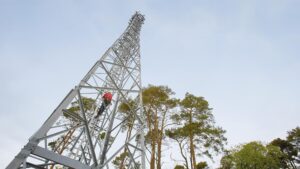Update 12 December: LTE has now reached Cape Town with sites in the CBD, Stellenbosch, the Atlantic Seaboard, the Waterfront and Century City. In the two months since Vodacom launched LTE, the number of LTE-enabled stations has grown from 70 to more than 500. LTE is now up and running in Johannesburg, Pretoria and Durban.
Twice the speed
LTE networks are so fast you can watch a movie online as it downloads.
LTE represents a major jump in mobile connectivity capabilities. The service has the potential to operate at more than double the speed of any existing mobile connection currently commercially available in South Africa, and at significant multiples faster than the 2G and 3G connections common across the country. Higher speed results in a more stable user experience with stutter-free video and almost instantaneous music and picture downloads.
Says Vodacom Group CEO, Shameel Joosub: “Vodacom was the first network in SA to test LTE more than two years ago, and since then we’ve been busy upgrading base stations and our fibre-optic transmission network in preparation for the switch-on.
“It’s great to claim another South African first for Vodacom with the launch of LTE services to the public, and it’s even more pleasing that we’ve done this ahead of many other advanced economies around the world. South Africa has joined an exclusive club with the fastest connectivity the world has to offer.”
Activate LTE now
Contract customers with LTE-capable devices can activate the service by simply calling 135 or visiting any Vodacom shop.

Speed freak: High-speed LTE internet is here
LTE-capable devices will be on sale in selected Vodacom outlets before the end of October, with priority going to existing Vodacom customers. (Pictured: Vodacom’s LTE dongle modem)
The LTE service will initially be accessible via approximately 70 base stations in Johannesburg. A coverage map is available on www.vodacom.co.za.
Further announcements will be made with respect to the network roll-out plans in due course.
How fast is LTE?
LTE networks are so fast you can watch a movie online as it downloads. An 800MB movie finishes downloading in just three minutes and a 2MB photo appears on the receiver’s screen milliseconds after it’s sent. High-quality video conferencing is a doddle on mobile devices and online TV or movies on demand go mainstream. Web pages load instantly.
There are fewer than 1 million ADSL (fixed broadband) lines in South Africa and only 10% of the population has access to a fixed line. Access to mobile broadband services, by comparison, is almost 100%. LTE is clearly the fastest and most practical route to get South Africa connected.
Number crunching
Data speeds are measured in megabits-per-second (Mbps) – the higher the Mbps, the faster the data transfer rate. Most network speeds are actually theoretical and measured in ideal rather than real-world conditions where networks are busy and signals can become degraded.
That said, current high-speed networks have three download speeds: HSDPA 21.6Mbps, HSPA+ 43.2Mbps and LTE 100+Mbps. A music clip would download in eight, four and one second respectively.
The LTE service requires a 64k or 128k SIM card



